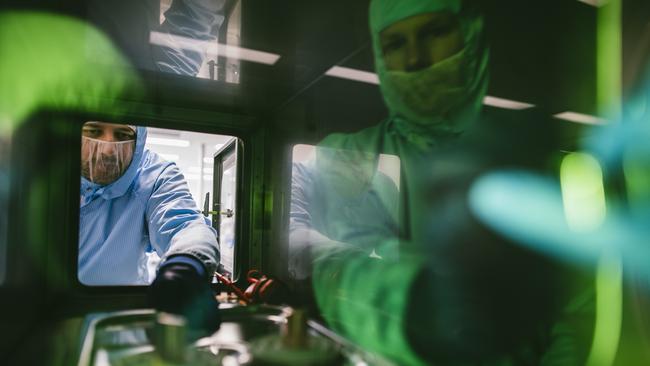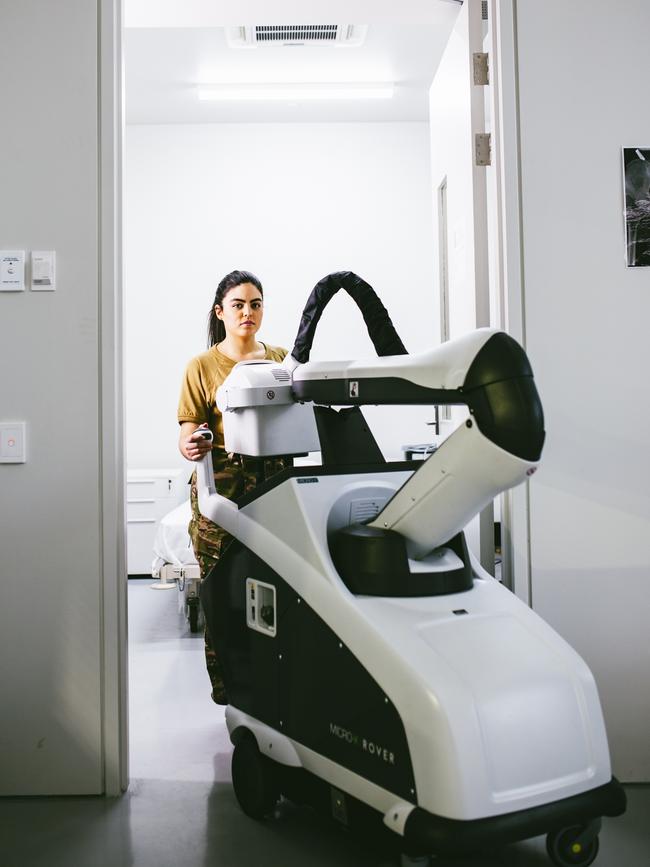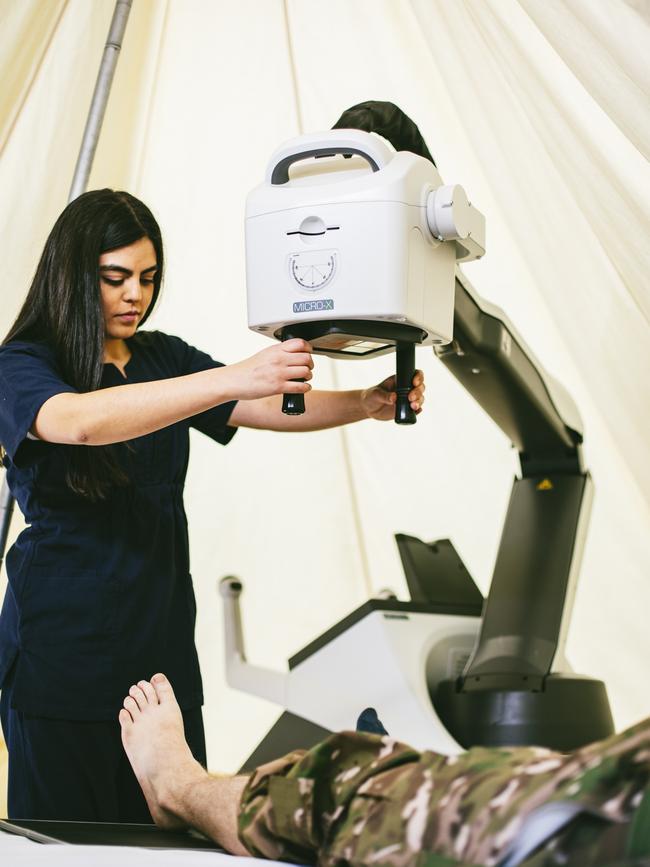2020 SA Science Excellence and Innovation Award Finalists announced
An Adelaide company that won the worldwide race to make a better, mobile x-ray machine – opening the way for mini CT scanners in ambulances – is a 2020 SA science award finalist.
Tertiary
Don't miss out on the headlines from Tertiary. Followed categories will be added to My News.
- CryoClock a rising star in photonics industry of the future
- How to get the most out of your Advertiser subscription
More than a century after Wilhelm Rontgen discovered X-rays, Adelaide business Micro-X has found a better way to make them.
Its patented invention has enabled the production of lightweight, mobile X-ray machines, which are selling faster than ever with the advent of COVID-19.
A chest X-ray is often used to diagnose pneumonia and determine the extent of lung damage in severe cases but infection control measures make small, mobile units more appealing.
Engineering manager Anthony Skeats says the technology also opens up “a whole lot of sophisticated and advanced future applications” in medicine, security and defence.

Together with the Australian Stroke Alliance, Micro-X wants to equip ambulances with miniature CT scanners, to rapidly assess patients, cut treatment time and improve outcomes.
Another project is developing a portable 3D X-ray scanner “the size of a galley trolley” to boost airline security measures.
Today, the State Government is announcing finalists in the 2020 SA Science Excellence and Innovation Awards, coinciding with National Science Week.
Micro-X, at Tonsley, is one of three finalists in the new category, Innovator of the Year, alongside CryoClock and the Australian Centre for Child Protection at UniSA.

Mr Skeats says huge international players have been chasing the technology for decades and hundreds of millions of dollars were spent in the race to make a commercially viable “wide- area field emitter”. Micro-X beat the others to it.
The difference between the old technology and the new is like an incandescent light bulb compared to an LED, Mr Skeats said.
“X-rays were generated like a light bulb with a thermionic element, where you boil off electrons, it’s a very uncontrolled, very hot process, so you have to get a lot of cooling and a lot of radiation shielding around that, so it gets very heavy, to get medical grade performance you need a roughly 25kg X-ray head,” he said.
“Whereas what we have with our carbon nanotube emitter technology is small, almost like a printed patch, which is cold and we generate the electrons using high-voltage fields, it means we can make the equivalent X-ray tube at around 1.5kg weight, which is a significant step forward.”


In the past 18 months, the business has doubled in size, employing 55 people, including an ex-Holden manufacturing team retrained to produce sophisticated technology.
The awards celebrate outstanding scientific contributions, life-changing research and innovative ideas by the state’s top leaders, teams and educators working across the fields of science, technology, engineering, mathematics and medicine.
Innovation and Skills Minister David Pisoni congratulated all of the finalists for their “outstanding achievements, rigorous research and important contributions to our economy and the wider community”.
“The record number of nominations in this year’s awards reflects the high-quality work and cutting-edge ideas being developed in South Australia, with almost 100 entries received across six categories, including our new Innovator of the Year award,” he said.
“The role of science has never been more important to unlock new thinking and innovation across the state’s key growth industries including defence, cyber security, health, and agriculture.”
Winners will be announced later in the year, at a date still to be confirmed.

